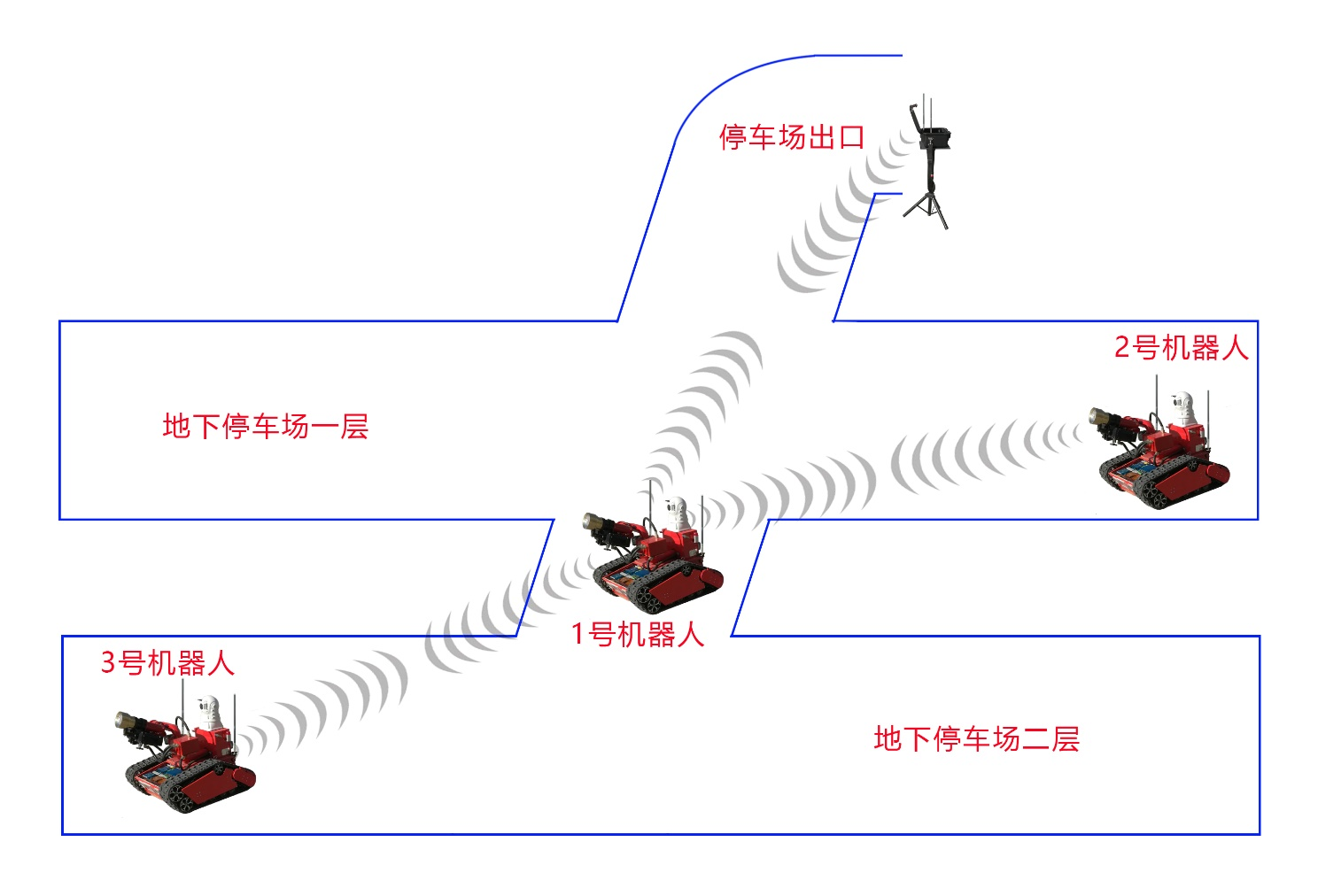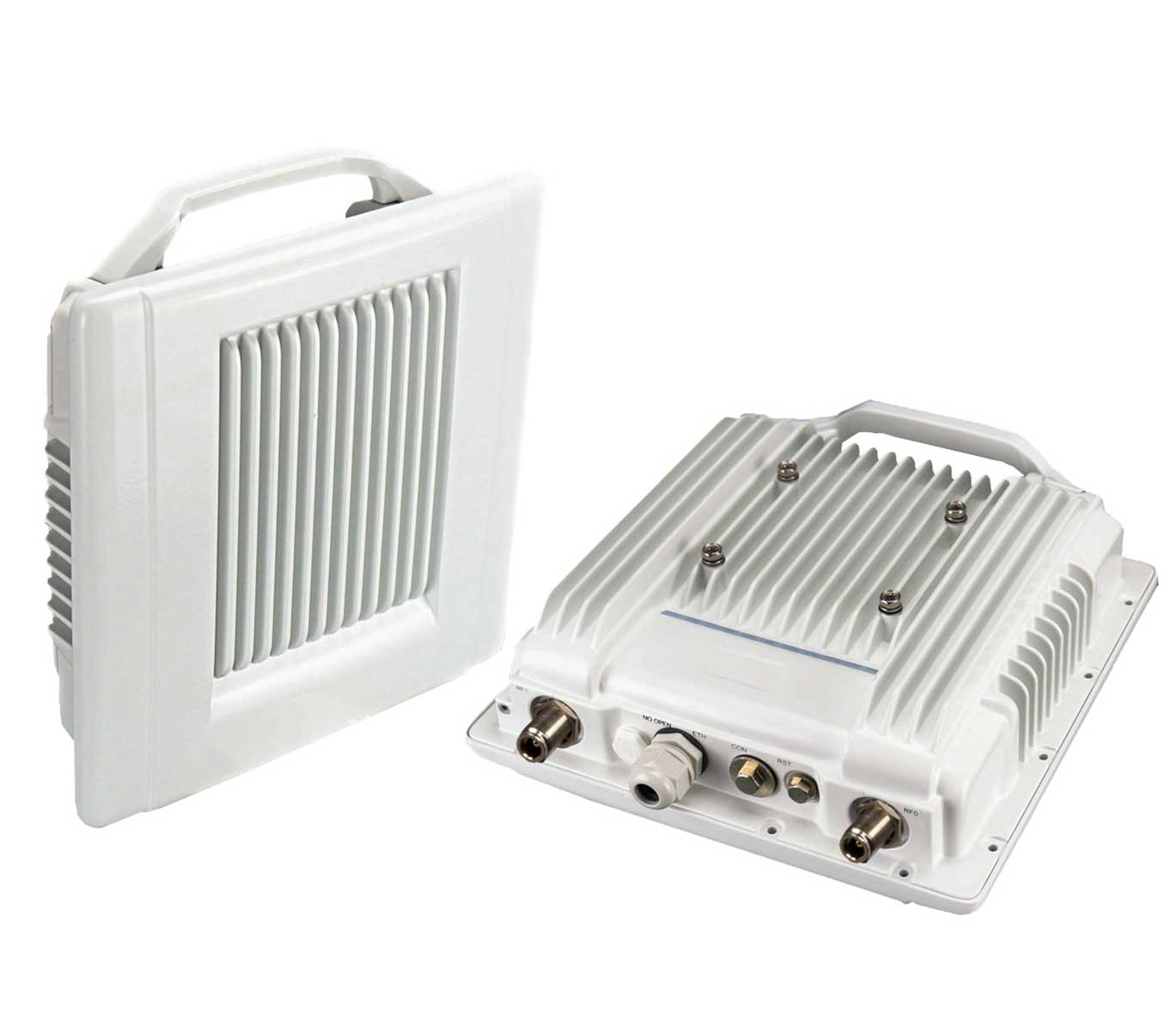Wireless Relay Transmission Solution for Firefighting Robots
1、Project background
With the rapid development of the social economy, the particularity of construction and enterprise production has led to an increase in the hidden dangers of chemical hazardous materials and radioactive substances leakage, as well as combustion, explosion, and collapse accidents, and the probability of accidents occurring has correspondingly increased. Once a disaster or accident occurs, when firefighters face hazardous environments such as high temperature, darkness, toxicity, and thick smoke, if they rush into the scene without corresponding equipment, they will not only fail to complete the task, but also increase casualties. The 8.12 Tianjin Binhai New Area fire and explosion accident is a painful lesson.
As a type of special robot, firefighting robots are playing an increasingly important role in firefighting and emergency rescue. Various large petrochemical enterprises, tunnels, subways, etc. are constantly increasing, and disaster hazards such as oil and gas leaks, toxic gas explosions, tunnel and subway collapses are constantly increasing.
This type of disaster has the characteristics of strong suddenness, complex disposal process, enormous harm, and difficulty in prevention and control, and has become a stubborn disease. Firefighting robots can replace firefighting and rescue personnel to enter hazardous disaster sites such as flammable, explosive, toxic, oxygen deficient, and thick smoke for data collection, processing, and feedback, effectively solving the problems of personal safety and insufficient data information collection faced by firefighters in the above-mentioned places. On site command personnel can make scientific judgments on the disaster situation in a timely manner based on their feedback results, and make correct and reasonable decisions on the work at the disaster site.
2、Requirement analysis
The user is developing a multifunctional intelligent firefighting robot for the fire department. In the early stage, COFDM mobile video was used as the image transmission carrier, which can basically meet the needs of the fire department. However, with the increasing application of fire robots, fire departments want to expand the application scenarios of robots. In some complex environments (such as basements and underground parking lots in large buildings), the original wireless image transmission equipment can no longer meet the transmission requirements. There is an urgent need for a new wireless transmission device and application solution to meet the actual needs of fire departments.
3、 Wireless transmission scheme design
Our company analyzes the actual situation of users in response to their new needs. The mobile video wireless transmission devices used by users in the early stage mainly adopted a one-to-one wireless link mode from front-end transmission to back-end reception, using a low-frequency working frequency, which can also achieve wireless image transmission in obstructed environments. However, for special and complex environments, due to signal attenuation during intermediate transmission, the back-end can hardly receive signals, so a new wireless transmission device and solution are needed. We have decided to use MESH self-organizing network devices for wireless transmission. MESH wireless ad hoc network transmission technology is the latest international wireless transmission technology. Mesh network, also known as "wireless cellular mesh network", is a dynamic and continuously expandable network architecture, where any two devices can maintain wireless interconnection. Mesh networks are more stable than single hop networks because in data communication, the performance of the network does not rely solely on a single node. In traditional single hop wireless networks, if a fixed AP fails, all wireless devices in the network cannot communicate. In Mesh networks, if a node's AP fails, it can select another AP for communication, and the data can still reach its destination at high speed. From a physical perspective, wireless communication means that the shorter the communication distance, the better the communication effect. As the communication distance increases, wireless signals not only weaken but also interfere with each other, thereby reducing the efficiency of data communication. In Mesh networks, shorter wireless network connections are used instead of longer distance connections, ensuring that data can be quickly transmitted between nodes at high rates. Mesh technology can make WLAN installation, deployment, and network expansion more convenient and efficient。
The specific application topology diagram of using MESH technology in this firefighting robot project is shown below:

As can be seen from the above figure, the main feature of MESH wireless transmission is self-organizing networks. In the case where point-to-point wireless transmission cannot meet the requirements, MESH wireless devices can be used for transmission. As shown in the figure, robots equipped with MESH wireless devices can simultaneously undertake operational functions and relay functions. When applying firefighting robots in an underground multi-level parking lot, the first robot first operates the underground parking lot. When the robot reaches a point where the wireless transmission signal is poor, it can stop at its current position and be used as a relay robot. As shown in the picture, Robot 1 stops between the first and second floors of the underground parking lot to maintain normal communication between the wireless signal and the control box at the exit of the parking lot. Then use Robot 2 and Robot 3 to conduct surveys and firefighting operations on the 1st and 2nd floors of the underground parking lot. Robot 2 and Robot 3 are not directly connected to the control box at the exit, but are connected to the control box through Robot 1 as a relay station.
In practical operation and use, each robot has the same function and can undertake relay and operation functions. Randomly use according to the on-site situation. All wireless devices on the robots can be connected to the network by powering on, without the need for other complex settings.
On the backend control box interface, real-time communication signals from the front-end robot can be viewed to determine the robot's distance. Assist operators in operating robots more intuitively, avoiding signal interruptions and situations where the robot cannot be controlled.
4、Introduction to Wireless Transmission Devices
In this plan, our company's TQ-5800M wireless product is used, which is a very powerful product combination that can adopt multiple communication combinations and be applied to different usage scenarios. It can be installed at fixed points or quickly deployed wirelessly in moving vehicles, ships, personnel, robots, and other locations. The product integrates base station communication, client communication, point-to-point communication, as well as powerful MESH self-organizing network functions and automatic roaming functions that are different from most MESH self-organizing network devices on the market.
The advanced MESH design concept does not require a central gateway, and any device can achieve self-organizing network function. If any device in the group drops, corresponding devices will continue to communicate within the effective antenna coverage range, ensuring that the network does not drop. In practical applications, we can adopt a ring network design without worrying about ring network congestion. At the same time, in addition to the wireless end having MESH function, the product's two wired network ports also have MESH function, which can be selected and used according to needs in practical application environments. Very flexible and convenient. The multi-mode MESH also has backup function, which can ensure better connection quality in complex environments.
The TQ-5800M series products have roaming function, and can self judge and switch between different base stations based on signal strength while moving. The moving speed is greater than 260km. It is more suitable for use in places with vehicle movement monitoring needs such as roads, mining areas, and tourist areas.
This series of products can be customized with high-power devices as needed, with a power output that can be increased to 3W for transmission. In high-power applications, it does not attenuate the throughput of transmission. In the actual application field, if higher bandwidth transmission is required, our equipment can also use wireless link aggregation technology to more than double the actual application bandwidth, that is, WTL communication mechanism (Wireless Trunking Link). According to the characteristics of the equipment, it supports point to multipoint, point to point, roaming, MESH ad hoc networks, and can be widely used in forest fire prevention, primitive forests, Rivers and Lakes, mining areas, drones, robots, pipelines, large industrial areas, roads, power plants, electricity, fire protection, public security, vehicles, ship law enforcement and other fixed and mobile point monitoring.
Product appearance:

TQ-5800M

